Great Books of the World
Adventure
Adventure is a genre of fiction in which an adventure, an exciting undertaking involving risk and physical danger, forms the main storyline.
24 titles sorted by popularity
-
 The Count of Monte Cristo
Alexandre Dumas
The Count of Monte Cristo
Alexandre Dumas
The Count of Monte Cristo is an adventure novel by French author Alexandre Dumas . Completed in 1844, it is one of the author's most popular works, along with The Three Musketeers and is considered as one of the best novels ever written. Like many of his novels, it is expanded from plot outlines suggested by his collaborating ghostwriter Auguste Maquet.
-
 Adventures of Huckleberry Finn
Mark Twain
Adventures of Huckleberry Finn
Mark Twain
Adventures of Huckleberry Finn is a novel by Mark Twain, first published in England in December 1884 and in the United States in February 1885. Commonly named among the Great American Novels, the work is among the first in major American literature to be written throughout in vernacular English, characterized by local color regionalism. It is told in the first person by Huckleberry "Huck" Finn, a friend of Tom Sawyer and narrator of two other Twain novels . It is a direct sequel to The Adventures of Tom Sawyer.
-
 The Adventures of Tom Sawyer
Mark Twain
The Adventures of Tom Sawyer
Mark Twain
The Adventures of Tom Sawyer by Mark Twain is an 1876 novel about a young boy growing up along the Mississippi River. The story is set in the fictional town of St. Petersburg, inspired by Hannibal, Missouri, where Twain lived.
-
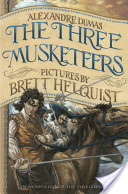 The Three Musketeers
Alexandre Dumas
The Three Musketeers
Alexandre Dumas
The Three Musketeers is a novel by Alexandre Dumas, first serialized in March–July 1844. Set in the 17th century, it recounts the adventures of a young man named d'Artagnan after he leaves home to travel to Paris, to join the Musketeers of the Guard. D'Artagnan is not one of the musketeers of the title; those are his friends Athos, Porthos and Aramis, inseparable friends who live by the motto "all for one, one for all" , a motto which is first put forth by d'Artagnan.
-
 The Call of the Wild
Jack London
The Call of the Wild
Jack London
The Call of the Wild is a novel by American author Jack London published in 1903. The story is set in the Yukon during the 19th-century Klondike Gold Rush—a period when strong sled dogs were in high demand. The novel's central character is a dog named Buck, a domesticated dog living at a ranch in California as the story opens. Stolen from his home and sold into the brutal existence of an Alaskan sled dog, he reverts to atavistic traits. Buck is forced to adjust to, and survive, cruel treatments, fight to dominate other dogs in a harsh climate. Eventually he sheds the veneer of civilization, relying on primordial instincts through lessons he learns, to emerge as a leader in the wild.
-
 Around the World in 80 Days
Jules Verne
Around the World in 80 Days
Jules Verne
Around the World in Eighty Days is a classic adventure novel by the French writer Jules Verne, published in 1873. In the story, Phileas Fogg of London and his newly employed French valet Passepartout attempt to circumnavigate the world in 80 days on a £20,000 wager set by his friends at the Reform Club. It is one of Verne's most acclaimed works.
-
 White Fang
Jack London
White Fang
Jack London
White Fang is the titular character and a novel by American author Jack London. First serialized in Outing magazine, it was published in 1906. The story takes place in Yukon Territory, Canada, during the Klondike Gold Rush at the end of the 19th-century, and details a wild wolfdog's journey to domestication. White Fang is a companion novel to London's best-known work, The Call of the Wild, which is about a kidnapped, domesticated dog embracing his wild ancestry to survive and thrive in the wild.
-
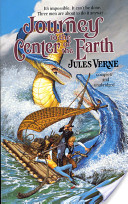 A Journey to the Centre of the Earth
Jules Verne
A Journey to the Centre of the Earth
Jules Verne
Jules Verne's third science fiction novel describes the discovery and exploration of a secret tunnel which leads through a volcano to the centre of the Earth. The leader of the expedition, together with his ward and joined by his nephew and an Icelandic guide commence the journey.
-
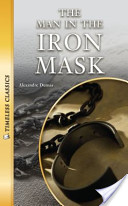 The Man in the Iron Mask
Alexandre Dumas
The Man in the Iron Mask
Alexandre Dumas
The Man in the Iron Mask is a name given to a prisoner arrested as Eustache Dauger in 1669 or 1670, and held in a number of jails, including the Bastille and the Fortress of Pignerol . He was held in the custody of the same jailer, Bénigne Dauvergne de Saint-Mars, for a period of 34 years. He died on 19 November 1703 under the name of Marchioly, during the reign of Louis XIV of France . The possible identity of this man has been thoroughly discussed and has been the subject of many books, because no one ever saw his face, which was hidden by a mask of black velvet cloth.
-
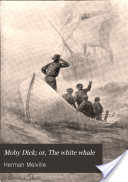 Moby Dick; Or, The Whale
Herman Melville
Moby Dick; Or, The Whale
Herman Melville
Moby-Dick; or, The Whale is a novel by Herman Melville, first published in 1851. It is considered to be one of the Great American Novels. The story tells the adventures of wandering sailor Ishmael and his voyage on the whaleship Pequod, commanded by Captain Ahab. Ishmael soon learns that Ahab has one purpose on this voyage: to seek out Moby Dick, a ferocious, enigmatic white sperm whale. In a previous encounter, the whale destroyed Ahab's boat and bit off his leg, which now drives Ahab to take revenge.
-
 Robinson Crusoe
Daniel Defoe
Robinson Crusoe
Daniel Defoe
Robinson Crusoe /ˌrɒbɪnsən ˈkruːsoʊ/ is a novel by Daniel Defoe, first published on 25 April 1719. This first edition credited the work's fictional protagonist Robinson Crusoe as its author, leading many readers to believe he was a real person and the book a travelogue of true incidents. It was published under the considerably longer original title The Life and Strange Surprizing Adventures of Robinson Crusoe, Of York, Mariner: Who lived Eight and Twenty Years, all alone in an un-inhabited Island on the Coast of America, near the Mouth of the Great River of Oroonoque; Having been cast on Shore by Shipwreck, wherein all the Men perished but himself. With An Account how he was at last as strangely deliver'd by Pyrates. Epistolary, confessional, and didactic in form, the book is a fictional autobiography of the title character —a castaway who spends years on a remote tropical island near Trinidad, encountering cannibals, captives, and mutineers before being rescued.
-
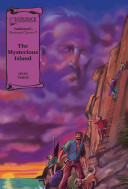 The Mysterious Island
Jules Verne
The Mysterious Island
Jules Verne
The Mysterious Island is a novel by Jules Verne, published in 1874. The original edition, published by Hetzel, contains a number of illustrations by Jules Férat. The novel is a crossover sequel to Verne's famous Twenty Thousand Leagues Under the Sea and In Search of the Castaways, though thematically it is vastly different from those books. An early draft of the novel, initially rejected by Verne's publisher and wholly reconceived before publication, was titled Shipwrecked Family: Marooned With Uncle Robinson, seen as indicating the influence on the novel of Robinson Crusoe and The Swiss Family Robinson.
-
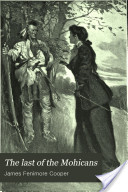 The Last of the Mohicans; A narrative of 1757
James Fenimore Cooper
The Last of the Mohicans; A narrative of 1757
James Fenimore Cooper
The Last of the Mohicans: A Narrative of 1757 is a historical novel by James Fenimore Cooper. It is the second book of the Leatherstocking Tales pentalogy and the best known. The Pathfinder, published 14 years later in 1840, is its sequel.
-
 Tarzan of the Apes
Edgar Rice Burroughs
Tarzan of the Apes
Edgar Rice Burroughs
Tarzan of the Apes is a novel written by Edgar Rice Burroughs, the first in a series of books about the title character Tarzan. It was first published in the pulp magazine All-Story Magazine in October, 1912; the first book edition was published in 1914. The character was so popular that Burroughs continued the series into the 1940s with two dozen sequels. For the novel's centennial anniversary, Library of America published a hardcover edition based on the original book in April 2012 with an introduction by Thomas Mallon .
-
 King Solomon's Mines
H. Rider Haggard
King Solomon's Mines
H. Rider Haggard
King Solomon's Mines is a popular novel by the Victorian adventure writer and fabulist Sir H. Rider Haggard. It tells of a search of an unexplored region of Africa by a group of adventurers led by Allan Quatermain for the missing brother of one of the party. It is the first English adventure novel set in Africa, and is considered to be the genesis of the Lost World literary genre.
-
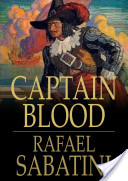 Captain Blood
Rafael Sabatini
Captain Blood
Rafael Sabatini
Peter Blood, an Irish physician and soldier in England in the 1680's, is wrongly convicted of treason and sentenced to indentured slavery in the Caribbean. He escapes and becomes the most feared pirate captain on the Spanish Main, but all the glory of his adventures cannot help him, for the woman he loves cannot love a "thief and pirate."
-
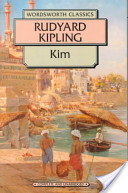 Kim
Rudyard Kipling
Kim
Rudyard Kipling
Kim is a picaresque novel by Nobel Prize-winning English author Rudyard Kipling. It was first published serially in McClure's Magazine from December 1900 to October 1901 as well as in Cassell's Magazine from January to November 1901, and first published in book form by Macmillan & Co. Ltd in October 1901. The story unfolds against the backdrop of The Great Game, the political conflict between Russia and Britain in Central Asia. It is set after the Second Afghan War which ended in 1881, but before the Third, probably in the period 1893–98. The novel is notable for its detailed portrait of the people, culture, and varied religions of India. "The book presents a vivid picture of India, its teeming populations, religions, and superstitions, and the life of the bazaars and the road."
-
 The Prisoner of Zenda
Anthony Hope
The Prisoner of Zenda
Anthony Hope
The Prisoner of Zenda is an adventure novel by Anthony Hope, published in 1894. The king of the fictional country of Ruritania is drugged on the eve of his coronation and thus unable to attend the ceremony. Political forces are such that in order for the king to retain his crown his coronation must go forward. An English gentleman on holiday who fortuitously resembles the monarch, is persuaded to act as his political decoy in an attempt to save the situation. The villainous Rupert of Hentzau gave his name to the sequel published in 1898, which is included in some editions of this novel. The books were extremely popular and inspired a new genre of Ruritanian romance, including the Graustark novels by George Barr McCutcheon.
-
 Martin Chuzzlewit
Charles Dickens
Martin Chuzzlewit
Charles Dickens
The Life and Adventures of Martin Chuzzlewit is a novel by Charles Dickens, considered the last of his picaresque novels. It was originally serialised in 1843 and 1844. Dickens thought it to be his best work, but it was one of his least popular novels. Like nearly all of Dickens' novels, Martin Chuzzlewit was released to the public in monthly instalments. Early sales of the monthly parts were disappointing, compared to previous works, so Dickens changed the plot to send the title character to America. This allowed the author to portray the United States satirically as a near wilderness with pockets of civilisation filled with deceptive and self-promoting hucksters.
-
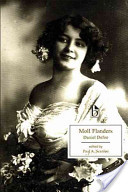 The Fortunes and Misfortunes of the Famous Moll Flanders
Daniel Defoe
The Fortunes and Misfortunes of the Famous Moll Flanders
Daniel Defoe
The Fortunes and Misfortunes of the Famous Moll Flanders is a novel by Daniel Defoe, first published in 1722. It purports to be the true account of the life of the eponymous Moll, detailing her exploits from birth until old age.
-
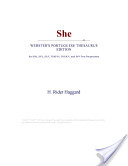 She
H. Rider Haggard
She
H. Rider Haggard
She, subtitled A History of Adventure, is a novel by Henry Rider Haggard, first serialised in The Graphic magazine from October 1886 to January 1887. She is one of the classics of imaginative literature, and as of 1965 with over 83 million copies sold in 44 different languages, one of the best-selling books of all time. Extraordinarily popular upon its release, She has never been out of print. According to the literary historian Andrew M. Stauffer, "She has always been Rider Haggard's most popular and influential novel, challenged only by King Solomon's Mines in this regard".
-
 The Scarlet Pimpernel
Baroness Emmuska Orczy
The Scarlet Pimpernel
Baroness Emmuska Orczy
The Scarlet Pimpernel is a play and adventure novel by Baroness Emmuska Orczy set during the Reign of Terror following the start of the French Revolution. The title character, Sir Percy Blakeney, represents the original "hero with a secret identity" that inspired subsequent literary creations such as Don Diego de la Vega and Bruce Wayne .
-
 At the Earth's Core
Edgar Rice Burroughs
At the Earth's Core
Edgar Rice Burroughs
At the Earth's Core is a 1914 fantasy novel by Edgar Rice Burroughs, the first in his series about the fictional "hollow earth" land of Pellucidar. It first appeared as a four-part serial in All-Story Weekly from April 4–25, 1914. It was first published in book form in hardcover by A. C. McClurg in July, 1922.
-
 The Poison Belt
Arthur Conan Doyle
The Poison Belt
Arthur Conan Doyle
The Poison Belt was the second story, a novella, that Sir Arthur Conan Doyle wrote about Professor Challenger. Written in 1913, roughly a year before the outbreak of World War I, much of it takes place in a single room in Challenger's house — rather oddly, given that it follows The Lost World, a story set in the jungle. This would be the last story written about Challenger until the 1920s, by which time Doyle's spiritualist beliefs had begun to influence his writing.